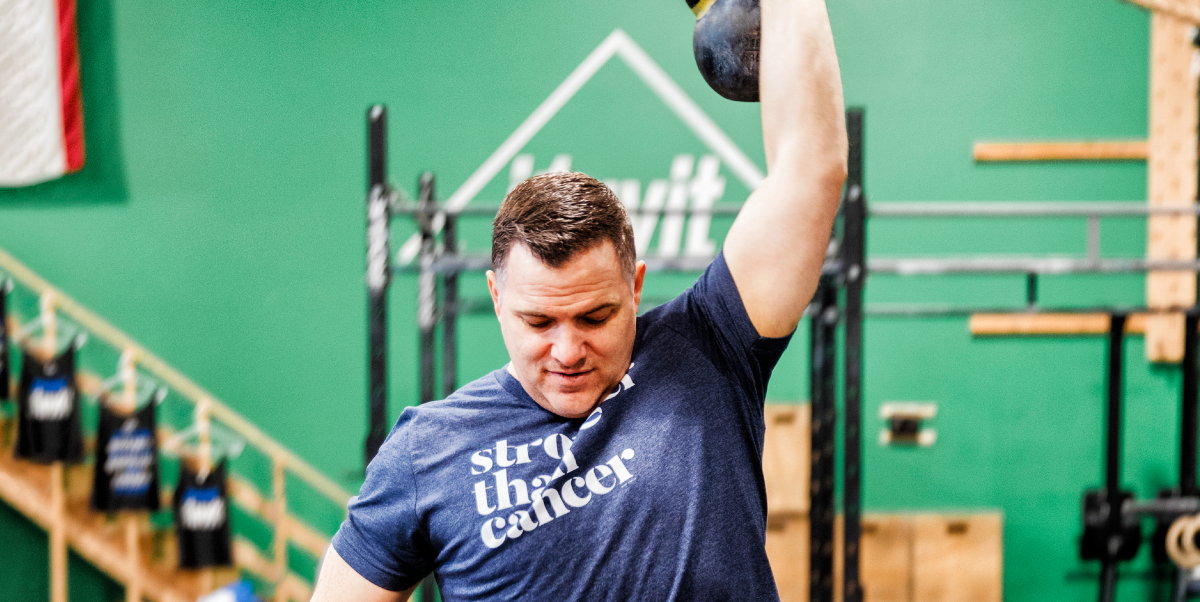How Training Every Day Helped Me Fight Colon Cancer


This is one in a series of 12 stories that explores the role of strength in modern life.
Five days after a golf-ball-sized cancerous tumor was removed from the inner workings of Rhett Bowlden’s ass, the man got that ass back into the gym. “Just for some fan-bike work,” says the 39-year-old, who was diagnosed with stage III colon cancer in January.
This was a natural follow-up to the reps he’d done in the ICU of PeaceHealth St. Joseph Medical Center in Bellingham, Washington. “After surgery, they wanted me up and walking,” says Bowlden. “There was a little chart on the wall, and it said that 21 laps around the hospital floor was one mile. I’d do 21 laps every time I got up to pee.”
The odds of a 39-year-old male developing colon cancer are about 1 in 10,000, which means Bowlden possesses what you can, without exaggeration, call shit luck. But how a man lives before, during, and after a big-C diagnosis influences how he plays the bad hand.
You have a 40 percent chance of developing cancer sometime in your life. Will your workout alter that figure? Doctors don’t know. But they do know that it can help you survive a diagnosis. Cancer patients with low muscle mass lived half as long and were 150 percent more likely to experience toxic chemotherapy side effects, according to a study in
The Lancet Oncology. Another study found that postcancer patients who did high-intensity weight training three days a week for 16 weeks reported having more energy, better physical function, and a higher quality of life.
Two years before the doctor gave him the news, Bowlden was 40 pounds overweight and embarrassed about it. “I was ashamed to go out and do things with my family because of my appearance,” he says. “At work I’d get winded just bending down to pick up casings during firearms training.” He set a handful of lofty fitness goals: reaching a sub-seven-minute 2,000-meter row, deadlifting double his bodyweight, and completing 15 strict pullups.
With five hard hours in the gym each week for one year, he made progress-taking 1:10 off his 2,000-meter row time and adding 80 pounds to his deadlift for a 410-pound max. The physical achievements strengthened the gray muscle inside his skull even more than those from his neck down. “Everyone tells themselves they’re going to beat cancer,” says Bowlden. “But because of what I’ve done with my physical fitness, I now actually believe myself when I say that.”
('You Might Also Like',)

